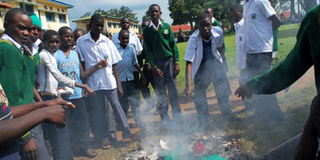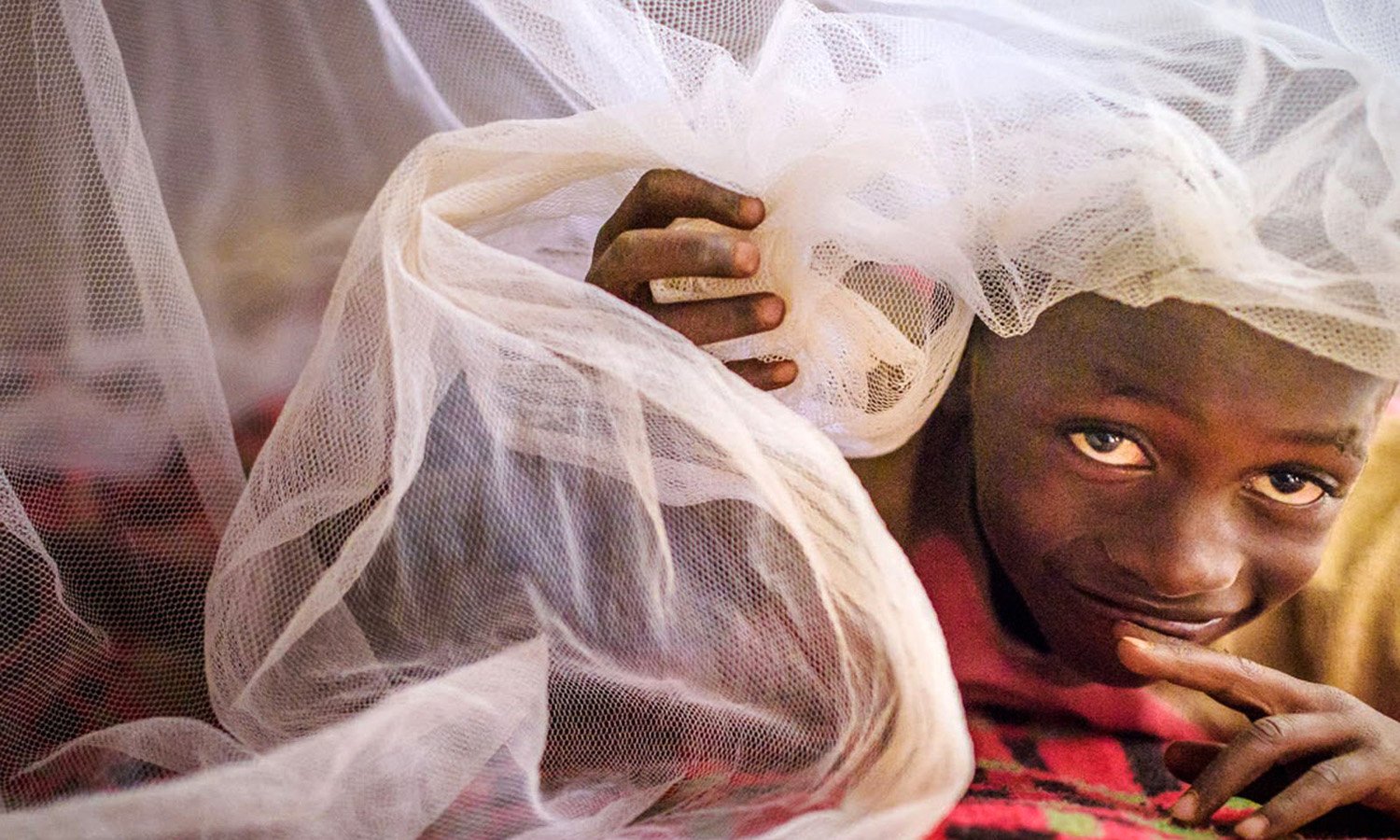School rivalries: Make them about academics

Ntare School has for many years had running battles with Mbarara High School. The most fierce ones are usually sparked off by football competitions. FILE PHOTO
What you need to know:
Some former students of Tororo College confess that it was compulsory for students to train one another in taekwondo as a way to prepare for warfare with Manjasi High School. Such was the gravity in the making of schools of scandal. We still witness these today like the recent one where a student of Kigezi High School died but these rivalries should be about academics.
Sports, girls, academics and ego top the list of why some schools can never be in the same room without a fight. Over the years, we have seen rivalry amongst schools heighten, fall while others persist.
More than a month ago, a Senior Five student of Kigezi High School died after he was hit by a stone during clashes with students of the neighbouring Nyabikoni Secondary School. The reasons for the attack have not been made public but 29 students from Kigezi High School were also arrested.
Kigezi High School has for long been one of the schools that is conflict ridden. In 2010 for instance, one student died when the school clashed with Kigezi College Butobere after the latter was suspended from a post primary football tournament following a complaint that the school was using non-students.
Regrettably such rivals between schools in the past years used to be about academic performance, would be non-violent and instead promoted healthy competition between neighbouring schools or those in the same region.
In his journal, Psychology of Rivalry, Gavin J. Kilduff defines rivalry as a particular competitive relationship that increases the emotional involvement of competitors beyond what the objective characteristics of the situation would predict.
....From cover
The case of egos
Arthur Kamujanduzi left Ntare School four years ago after a six-year stay at the school from 2010 to 2015. He refers to his departure from the ‘mighty’ school as a mixture of feelings. “I had some outstanding moments during my stay but some of my downside moments were in 2013 while in Senior Four. We had a number of strikes and running battles with Mbarara High School,” he shares.
But Kamujanduzi notes that the rivalry between Ntare School and Mbarara High School seems to stem from the fact that the two were among the first boys’ schools in Mbarara Town, located close to each other and competitors in big aspects such as academics and sports.
He reminisces one of the bad clashes that lasted three days, “It started from a volleyball game between Ntare School and Mbarara High School which the latter won.
Mbarara High School boys decided to go celebrate the win in front of their opponents. As their school bus was moving about with them. Seeing this as provocation, Ntare boys started pelting stones on the bus.”
Mbarara High School boys did not react but left quietly the school but Ntare did not know they had instead gone to plan their next move. “That night, about 50 of Mbarara High School boys entered Ntare through one of the shortcuts. They vandalised almost all the cars that were parked at the school chapel at the time and brought down the glass entrance to the school’s treasured Main hall,” he recounts.
Revenge attack
The news of the destruction spread very fast the next morning and Ntare could not take it lying down. “The students launched an attack. They decided to walk to Mbarara High School for revenge but were stopped by police at Kiyanja Trading Centre which is about one kilometer to Mbarara High School,” Kamujanduzi recalls.
The boys retreated, but with a plan to attack at night. “However, this too was foiled by the police who had now camped around Mbarara High School. The students scampered but some were arrested while others spent that night in shrubs near Kakyeka Stadium in Mbarara Town,” he adds.
Deep-seated issue
In the face of such rivalry and determination by the students, what is the motivation that fuels such heinous actions? Kamujanduzi confesses, “Most of us took part in these out of adventure. We were not really angry because we had friends in those schools and some even brothers but we just took pride in such bold undertakings,” he says.
George Kakuru, a former student of Mbarara High School, also agrees that it is more about pride. “Looking back at the rivalry, I can say it boiled down to who would be more daring to do the craziest thing that would hurt the rival school and hurt students where it hurt most.”
Sharing his experience at St Peter’s College Tororo, (Nyangole boys) which was always at loggerheads with Manjasi High School Nikita Emma Junior said, “…At school we led a life similar to that of soldiers. From Senior One, you get introduced to Taekwondo and you had to perfect the basics. Manjasi boys were considered our enemies. We fought with them for Tororo Girls School, which ironically is closer to their school. We showed them that we owned the girls [and] would walk miles to attack them, [and] fight the whole night.”
Junior said they even used pangas and slashers. During inter-school football games only the presence of military police would stop the two schools from clashing. Sadly, he says teachers were part of this rivalry.
The psychology of rivalry
According to the journal, The Psychology of Rivalry: A Relationally-dependent Analysis of Competition, Competition is a fact of life; employees compete for promotions, groups of researchers vie for grants, and companies fight for market share. Typically associated with competition is the drive to win, or defeat one’s opponents. Although rivalries are prominent in sports, they exist in a broad range of settings. Research presented by the same notes that relationships between competitors, especially influenced by their proximity, relative attributes and prior competitive interactions can influence the intensity of rivalry between them, which in turn can affect their competitive behaviour.
Dealing with rivalry
Sometimes, finding the cause for the rivalry and eliminating it can be a solution. A case in point, the rivalry that existed between St. Peters College, Tororo and Manjasi High School over Tororo Girls School was neutralised in the early 2000s by transforming Manjasi High School into a mixed school.
Rose Kuloba, the deputy head teacher, Manjasi High School shares that, “They are now like brother schools, that support each other, visit each other because the issue that used to cause the fights, (girls in the nearby Tororo Girls School) was solved. Both wanted exclusive access to the girls and would attack each other during school dances, games, and war would ensue that involved police. This is long gone now. But also, previously, there were just three schools in the neighbourhood: Manjasi, St. Peter’s College Tororo, Tororo Girls but the introduction of other schools has downplayed the rivalry.”
Where are the academics?
But the same vigour, creativity, passion and competition should be employed in academics. In fact this is not new. In the past there were the famous rivalries in academics between King’s College, Budo and St Mary’s College, Kisubi among the boys’ schools in the central region, as well as the three-way battle between Mt. St. Mary’s Namagunga, Nabisunsa Girls School and Gayaza High School for the girls’ schools in central.
Eastern Uganda was home to academic contests between Busoga College, Mwiri and Kiira College Butiki, or Nabumali High School, Tororo College and Teso College, Aloet in the far east. In northern Uganda, the academic rivalries were often between St. Joseph’s College, Layibi and Lango College. And as he shared his experience on the Daily Monitor Facebook page, Musa Moses recalls, “Kiira College Butiki [in] 1998, our rivalry with Busoga College Mwiri drove us in spending sleepless nights reading. Because of going an extra mile reading that year, we drowned Busoga College as the giants in Sciences in the region.”
Productive competition
Additionally, Grace Mulumba, a retired teacher of St Noah Girls School, recalls that some of the oldest schools kept a healthy academic competition going. “St Mary’s College, Kisubi and King’s College Budo were known for their academic competition. They rivalled over who got the highest number of students passed, who had more students on government sponsorship at university, who was superior, more prestigious in playing rugby.”
The educationist further shares that although competition is good, when it goes beyond academics, it is dangerous not only to the students, but the school administration too. That is how schools lose their lustre. A healthy academic competition, though, can inspire a lot of things.
“It inspires innovation, keeps schools focused in regards to giving parents value for money through a meaningful education, basically you are making a name, the right way. Healthy competition inspires hard work and creativity. That is the kind of rivalry that is meaningful, not hooliganism,” Mulumba asserts. Similarly Kuloba says such rivalry drains students emotionally, because they spend much of their time, planning how to fight. “They catalyse violence and very negative tendencies in students. They strategise and plan as if it’s military warfare. We would see students (of Manjasi High School) moving out with different designs of weapons and many sustained terrible injuries,” she notes.




